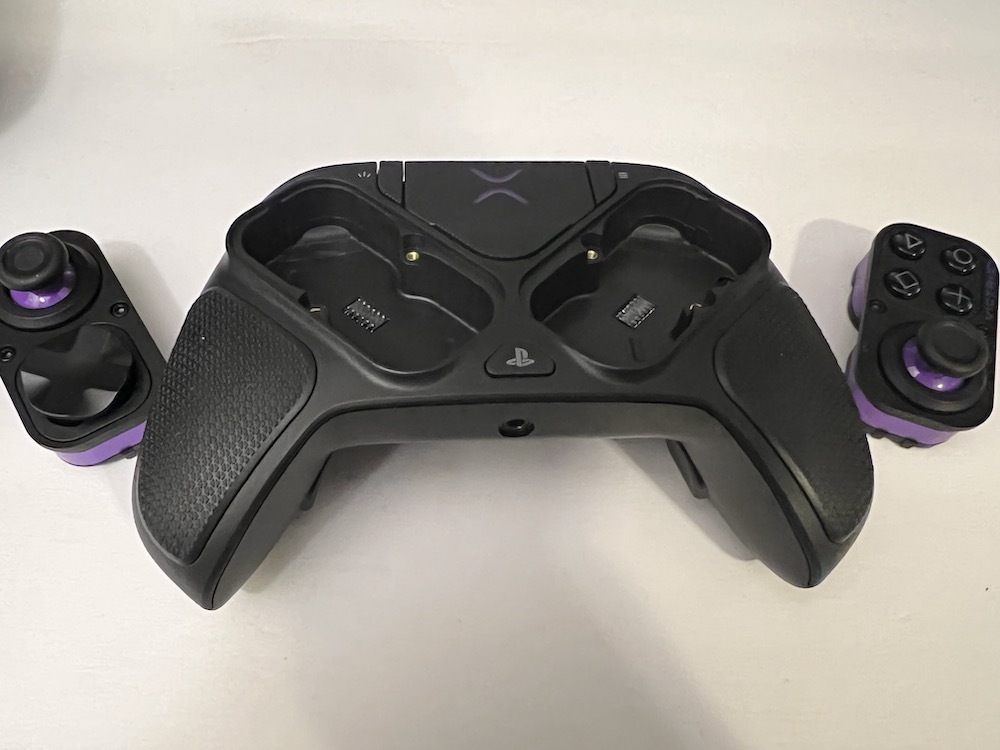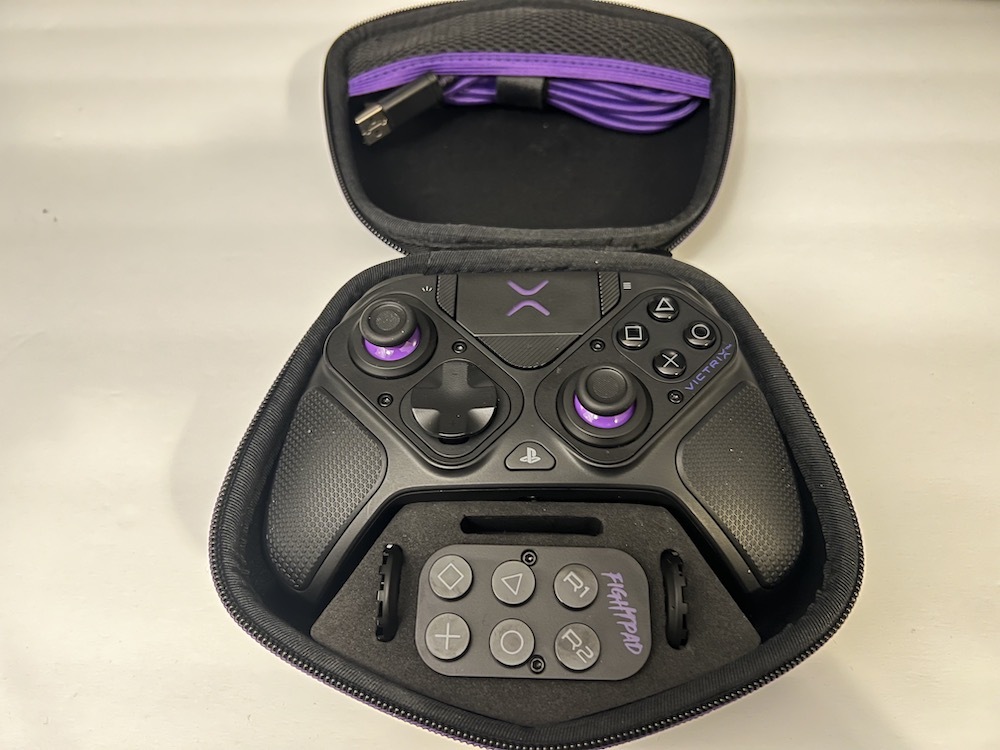More than two years after the PlayStation 5’s release, there are finally other controller options other than the DualSense. Sure, there have been numerous modded PS5 controllers from third-party manufacturers, but the PDP Victrix Pro BFG is the first officially licensed PS5 controller to be revealed. After spending some time with the BFG, the premium controller lives up to its $180 price. With excellent ergonomics and arguably unparalleled versatility thanks to its modular design, the Victrix Pro BFG is definitely worth a hard look if you’re in the market for a competitive gamepad or simply prefer the form factor of Xbox controllers.
Though the Victrix Pro BFG was the first third-party controller revealed for PS5, it's not the only one to choose from. The Razer Wolverine V2 Pro also releases this month, and PlayStation's own DualSense Edge launches in January. I can’t comment on how it compares to the Edge just yet, but I also tested the Wolverine and will share thoughts on how they stack up against each other at the bottom of this review.
Modular design adds versatility
The Victrix Pro BFG goes beyond the usual features of competitive controllers like enhanced grips, swappable stick caps, and remappable rear triggers. It has all of those essential boxes checked, but it has far more customization features than you’d expect from most controllers–even high-end ones in this price range. The BFG has a modular design that allows you to switch input layouts on the fly.
Both the right and left sides of the controller have control modules that can be removed in seconds with the included hex screwdriver. By default, the BFG has a traditional Xbox-style layout with a unique full-body diamond D-pad that sets up well for fighting games.
Speaking of fighting games, a fight pad module can replace the face buttons and right joystick. This module includes six flat, large buttons that replace the four face buttons as well as R1 and R2. The six face buttons on this module sound and feel like clicking a mouse. They are super responsive and have a superb feel.

Though the BFG is shaped more like an Xbox controller, you can invert the left module to get aligned joysticks along the bottom of the controller–much like a conventional PlayStation controller.
Inside the handy carrying case, you'll also find two more D-pads, two additional analog sticks, and a pair of spare spacers/guards for the sticks. Though the default D-pad works well and makes diagonal presses easier, traditionalists can use the normal cross-style pad. Or you can opt for a design that's in between the two–it closely resembles the current official Xbox D-pad. Meanwhile, the extra sticks are what you'd expect from a controller like this: one long stick with a concave cap and a short stick with a domed cap. FPS players might find that a longer stick is better for aiming down sights, whereas the short domed stick used on the right side may promote twitchier movements. Personally, I prefer the standard style of most analog sticks, and the matching sticks that are equipped out of the box feel very much like a first-party controller.
Ergonomics and performance
The wealth of customization options makes the Victrix Pro BFG ideal for all genres of games, not just shooters–which tend to be the focus of most pro-style controllers. It has great ergonomics and high-level performance regardless of which layout or modules you use.
It all starts with the form factor, which, as mentioned already, pretty much mirrors the Xbox wireless controller. If you're someone who thinks the DualSense is perhaps a touch too large, the Pro BFG will likely be more natural to hold. Due to its lightweight design and plastic shell, it certainly isn't as premium as the Xbox Elite Series 2. That said, it has a well-made, sturdy build, which is critical due to the modular design.

The front of the handles have raised, rubberized pads that enhance your grip and add a bit of additional comfort. The back of the handles are also rubberized and textured, though these panels are subtler and flush with the plastic that wraps around the rest of the controller.
Victrix opted for the best kind of remappable rear triggers: actual buttons built into the controller. These are becoming more common, and I've always found them to be easier to use and more natural than detachable paddles. There are four back triggers total, two on each side. As usual, there's a small trigger on top and a larger one below it. They are built into the curvature of the handles, which means they sit in spots where the middle and ring fingers of most players rest naturally. Built just like the left and right triggers on top of the controller, they have a winged design that is ergonomically sound. You can remap these triggers on the fly with the profile button located on the back of the BFG.
The BFG also has a feature that has become increasingly common in these types of controllers: trigger stops. The left and right triggers can be modified to decrease pull distance, making them feel more like shoulder buttons. What's especially cool about these trigger stops is that you can calibrate the pull distance precisely to your liking. Two switches on the back correspond to each trigger. You simply pull the switch, hold it, press the trigger down to your desired stopping point, and then let go of the switch to save that setting. The triggers do not need to be calibrated to the same spot. Activating the trigger stops can be beneficial for first-person shooters, but it should be noted that some games aren't fully compatible with trigger stops engaged. For instance, I tried using them with God of War Ragnarok and wound up not being able to throw Kratos' axe.
All of the BFG's features and modules work with PS5, PS4, and PC. A switch on the top of the controller can be toggled to choose your platform. It connects to all devices via a 2.4GHz USB-A adapter or with the included USB-C to USB-A cable (braided, roughly 10-feet long). The BFG ran for approximately 20 hours on a full charge.

What you lose by going third-party
Yes, the BFG is officially licensed, but that doesn't mean it retains all of the features found in the DualSense. This includes adaptive triggers, arguably the coolest console controller advancement in recent memory. As a primarily pro-style controller, the omission of adaptive triggers in favor of trigger stops makes sense.
In addition to that potentially sizable loss, you're also losing haptic feedback--well, rumble altogether, in fact. Lastly, the BFG doesn't have an internal speaker, though it does have a 3.5mm headphone jack. Again, both of these absences make sense when you consider the target audience, I didn't miss either of them during my testing.
Technically, those three aren't the only missing features. Though the BFG has the PlayStation button, you cannot turn the console on with the controller. This really isn't an inconvenience, considering the PS5 has an HDMI link feature that can power on the console when your TV is turned on.
The bottom line
The Victrix Pro BFG is a truly superb controller. I've tested a lot of competitive-focused controllers with eye-watering prices, and the BFG is right there with the best of them. It has unparalleled customization features compared to other current-gen controllers–and that won't change when any of the other currently announced controllers launch.
Yes, $180 is a steep asking price for a controller, but it is loaded with useful features and additional components, all of which can be neatly stowed inside the included hardshell carrying case. Nothing has been announced at this time, but the modular design allows for the possibility for more swappable components to be released, if Victrix decides to go that route.
You can purchase the Victrix Pro BFG at multiple major retailers, including Amazon, Best Buy, and GameStop.
How does it stack up against the competition?
As mentioned, the Victrix Pro BFG isn't the only premium controller for PS5. The Razer Wolverine V2 Pro is around the corner, and Sony's DualSense Edge releases on January 26. The Pro BFG is actually the least expensive of the three, with the DualSense Edge coming in at $200 and the Wolverine V2 Pro going for a whopping $250.
If you're interested in any of these controllers, it probably makes sense to wait to see hands-on impressions of all of them, but especially the DualSense Edge--unless you know you want offset sticks and something with a different form factor than the DualSense, of course.
When it comes to the question of Victrix Pro BFG vs. Wolverine V2 Pro, I give the edge (heh) to the Pro BFG due to its aforementioned standout features. The Pro BFG offers far more customization features. It also has better ergonomics for me, but keep in mind that your hand size plays a big part here. The Wolverine V2 Pro is larger, and Razer stuck with the vertically oriented rear triggers, the same style as the Wolverine V2 Chroma for Xbox. They work and feel great, but they aren't nearly as conveniently placed. I think the Pro BFG is more practical for a wider audience, and the $70 price difference is also something to consider, too.
However, that's not to say the Razer Wolverine V2 Pro isn't impressive in its own right. Far from it. In fact, the Wolverine V2 Pro beats the Pro BFG in terms of overall build quality and premium input feel. The sticks are slightly better, the face buttons and D-pad are extremely responsive thanks to Razer's mechanical switches (gaming mouse feel and sound), and it has two additional programmable buttons next to the top triggers.
Make sure to check out our Razer Wolverine V2 Pro review for a more in-depth look at the only other officially licensed, third-party PS5 controller.
The products discussed here were independently chosen by our editors. GameSpot may get a share of the revenue if you buy anything featured on our site.








